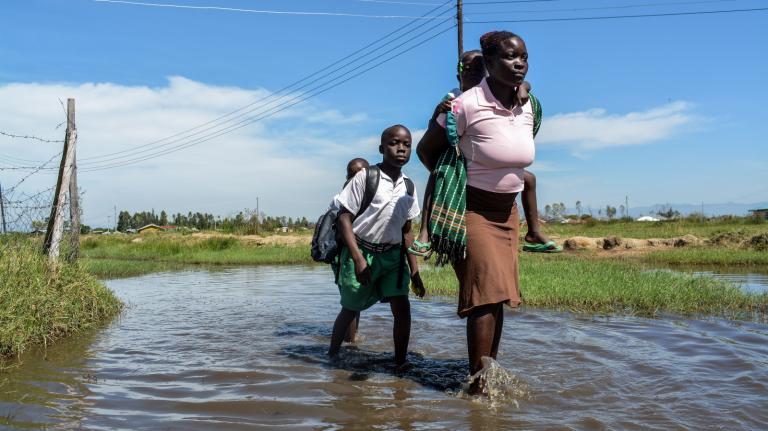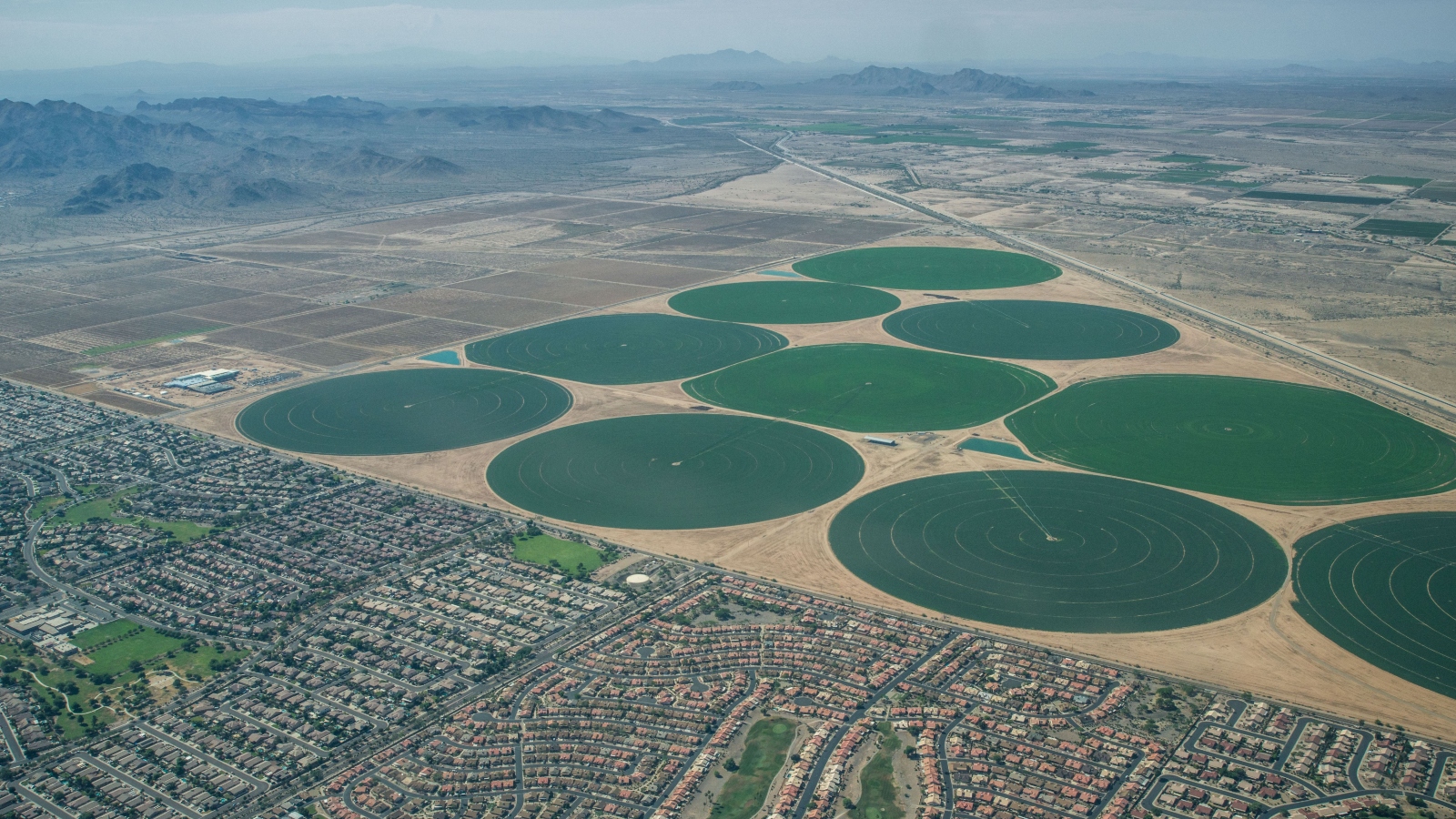As the Biden administration has pushed the seven states that rely on the shrinking Colorado River to cut their water consumption, much of the pain has fallen on Arizona. The state is the river’s second-largest water user, but of the seven states it has the most junior rights to the waterway. For the past year, farms and cities around Phoenix and Tucson have been bracing for the new restrictions that the administration is set to finalize this week.
To soften the blow, federal officials and Arizona politicians are now turning to a pair of tribal nations that control more than a third of the water that the state gets from the Colorado River. Thanks to a set of laws and agreements hashed out over the past six months, the state and federal governments are paying the two tribes to reduce their water usage over the next few years, easing the pressure on the rest of the state.
The drought has given the two tribes an essential role in the negotiations over the river as thirsty Arizona industries, particularly manufacturing and real estate, look to them for help navigating the water shortage. In exchange for reducing their usage from the river, the tribes will receive compensation totaling hundreds of millions of dollars that could help improve reservation water quality by refurbishing old wells and upgrading pipe infrastructure. But these new opportunities to monetize water come with trade-offs for the tribes as they weigh whether to retain water for reservation agriculture.
“It’s creative thinking,” said Heather Tanana (Diné), a law professor at the University of Utah who studies tribal water rights. “Everyone is always talking about, ‘How do we solve the supply issues?’ We have to try something, and here the tribe is getting something out of it.”
Many tribes along the 1,500-mile Colorado River have struggled to secure water access due to complicated legal barriers. Some tribes have never managed to quantify their water rights at all, thanks to long standing opposition from the federal government and the states. The Gila River Indian Community (GRIC) and the Colorado River Indian Tribes (CRIT), whose reservations are both located in Arizona, are the exceptions to that rule.
Both tribes settled with the U.S. government decades ago, guaranteeing their rights to a large share of Colorado River water that they used before settlers arrived. Together, they now enjoy rights to almost 10 percent of the river’s total flow. Moreover, these rights are among the most senior on the river, meaning the tribes will be the last to lose their allocations during shortages. GRIC and CRIT use much of this water to irrigate large farming operations that grow alfalfa and cotton, but they own more water than they can deploy on farms, so they store some in underground reservoirs.
The Biden administration and Arizona political leaders are seeking to pay the tribes to use less water, reducing the burden on cities and businesses around Phoenix and Tucson. The Gila River Indian Community will leave water in Lake Mead, one of the Colorado’s major reservoirs, which will help prevent mandatory statewide water cuts; the Colorado River Indian Tribes will lease their water to non-tribal users in Arizona, sharing it with farms and cities. The two tribes have considered such agreements for years, but the Biden administration and Congress have made a new push to free up the tribes’ water over the past year amid the drought.
Those efforts bore fruit last week when the Gila River Indian Community announced a landmark conservation deal with the federal government, agreeing to leave a huge chunk of its water in Lake Mead for three years. The Biden administration will pay the tribe around $150 million, which it can use to restore wells and build infrastructure on the reservation. The feds also agreed to build an $83 million pipeline that will bring recycled wastewater to the reservation for farming, providing a further substitute for the Colorado.
GRIC’s reservation sits just south of Phoenix, and it has partnered with Phoenix-area cities on leasing and conservation deals before. But last week’s agreement with the Biden administration is by far the tribe’s largest water deal to date. The water that GRIC will forego over the next three years could supply half a million homes, and leaving it in Lake Mead will help ensure that the reservoir doesn’t bottom out, as federal officials have feared.
The all-star cast at the press conference drove home the significance of the agreement for Arizona’s non-tribal users. The state’s governor and both of its senators were in attendance, along with two members of Congress, the mayors of Phoenix and Tucson, and two high-ranking officials from the Department of the Interior.
“These are truly historic investments,” said Stephen Roe Lewis, the governor of the Gila River Indian Community. “This is an Arizona-wide response to a need to reduce and conserve water in the lower basin.” Roe Lewis’s endorsement of the deal appeared to mark a shift from August of last year, when the tribe said it would hold off on participating in conservation agreements and instead would continue to store extra water in its own underground aquifers.
If the tribe takes less water from Lake Mead, the water level in the reservoir will be higher by about two feet. Since the federal government uses Lake Mead’s water level as a benchmark for calculating water cuts, a higher reservoir will mean less severe cuts for Arizona. In effect, the Biden administration is paying GRIC so that cities and companies in Arizona will lose less water than they otherwise would under its proposed cuts.
“One of the signals that [GRIC] wanted to send in signing this agreement now is that tribes are not excluded from the conversation,” said Donald Pongrace, a lawyer at the firm Akin Gump who serves as counsel for GRIC. “Tribes are central to the dialogue and the solutions, and coming up [with a system conservation plan] before anybody else just confirms that.”
The deal could help secure water supplies for the state’s booming and thirsty semiconductor industry, according to Tom Buschatzke, Arizona’s top water official.
“They use a lot of water, and more and more are looking to come here, and those plants are gonna put a new demand on servicers,” he told Grist. “This makes the supplies for those plants more secure, because [Lake Mead] is less likely to crash.”
The Colorado River Indian Tribes, whose reservation sits on Arizona’s western border, are also taking steps to help the Grand Canyon State survive the coming shortage. After years of advocacy by Arizona lawmakers, President Biden signed a bill in January that allows the tribe to lease its water within Arizona, opening up a vast store of water for marketing within the state. Unlike GRIC, which has been able to lease water for decades thanks to the terms of an earlier settlement, CRIT has never been able to lease its 650,000 acre-foot allocation of water.
The CRIT leases will provide an alternate water source for thirsty cities in the Phoenix metro area, allowing local governments to buy new water if they lose out on their own share of the Colorado River. If the tribe takes an aggressive approach to leasing out the water over the next few years, it could help alleviate much of the pain from future shortages; when the bill passed, Senator Mark Kelly said it “could not be more significant” for his state’s water future.
CRIT also negotiated its own conservation agreement back in 2021, a kind of test run for GRIC’s deal with the Biden administration last week. In that deal, tribal leaders agreed to leave 150,000 acre-feet of water in Lake Mead in return for a payment of $38 million. Most of the money came from the state government, but the last $8 million came from a group of major corporations including Intel, Procter & Gamble, and Keurig Dr Pepper, all of which have operations in Arizona that entail significant water usage.
Representatives for CRIT didn’t respond to interview requests in time for publication.
As transformative as the new deals might be for these Arizona water users, Tanana says they also represent a big step forward for GRIC and CRIT, giving the two tribes the ability to leverage resources in the way non-tribal users always have.
“Tribes should be allowed the same ability to do what they want to do with their water as anyone else,” she said, noting that many other tribes in the Colorado River Basin still don’t have the ability to lease their water. “When [GRIC and CRIT] have been compensated for their water, they were able to use that funding to meet community needs. So it’s a big deal.”



